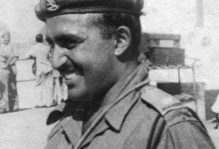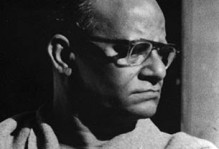Suhasini Biswas: A Prisoner of War in Conversation with Tagore
Tagore inspired a woman to live through the harrowing times of World War II as a prisoner of war in a Japanese detention camp. This is the story of Suhasini Biswas and her Gitanjali Dirary.
Suhasini Biswas (1895-1970) was born into a Bengali Christian family in Calcutta. She was encouraged to be independent and get good education . She graduated from Calcutta’s Diocesan College form where she subsequently also obtained her teachers’ training degree. As a faculty at the Faizunessa Government Girls’ High school in Comilla (now in present Bangladesh) Suhasini came in close contact with the Australian Baptist Missionaries and was invited to visit Australia.
This gritty lady despite the dangers of World War II with German and Japanese naval warships lurking in the Pacific, decided to undertake a sea journey to Austraila in 1941. On her return journey from Austraila aboard SS Nankin in April 1942, the worst fears came true. The ship was attacked by the Germans and sunk . All the passengers were taken hostage and handed over to the Japanese . Suhasini was interned at the Fukushima POW Camp as a ‘British civilian prisioner’.
She was to remain as the prisoner of war from July 1942 till September 1945. Such a long detention in most inhuman conditions can break the most resolute. What sustained Suhasini were the poems of Gitanjali. While all the personal belongings were confiscated, she was able to smuggle in her personal copy of Tagore’s Gitanjali in Bengali by telling the authorities that it was the Bible. This copy of Gitanjali became her prison diary in the margins of which she recorded her personal struggle as a prisoner .
In this prisoners’ journal are penciled some poignant lines where she is virtually talking to Tagore and his poems and drawing her sustenance to survive. Tagore’s Gitanjali stood by her through shortage of food, difficult living conditions , meagre medical attention, brutal punishments, no contact with the outside world, pangs for the loved ones at home and ofcourse the hovering spectre of death.
It is here that Suhasini was interned as a POW. Prisoner of War camp in the Fukushima area of north-central Honshu, photographed from a USS Lexington (CV-16) plane, 25 August 1945. Credits: Naval History & Heritage Command, United States Navy
Suhasini’s Diary opens with the name of the detension camp penciled on the margins of the first song in Gitanjali - Amaar matha noto kore dao hey ( Please make me bow to YOU). Suhasini underlined the last two lines of this poem shokolo ohonkare amar ,dubayo chokhero joley(all my ego be drowned in my tears!), a mental preparation by Suhasini, for taking on the challenge of the future days, through purging of all ego and submitting completely to God’s will. On another page of the book one finds an entry dated 5th June on the margins of the poem Bipode moure rokkha koro e nohe moro prarthona, bipode ami na jano kori bhoy( In difficult times I do not ask for YOUR protection, I only ask YOU to give me strength to face my adversities). Maybe 5th June was one of those days, when Suhasini was on her tenterhooks and appealed to God for strength to face the worst that the POW camp has to offer. In another page on the margins of the poem se je paashe eshe basechhila tobu jaagini, ki ghum tore peyechhila hatabhaagini (HE came and sat by my side but I woke not. What a cursed sleep it was, O miserable me!), Suhasini writes ( dated 4th Oct 1943) that experiencing God in the silence of the night is mersmerising, however she rues, that night she was determined to keep awake in company of God, but fell asleep as the devotee in the poem does. There are many more such notings in the pages of Suhasini’s Gitanjali Diary.
Poetry moved out of the pages and got interpresed in her determination to survive . After the war ended, Suhasini came back home to her family severly scarred both physically and emotionally. However the brave woman that she was, she recouped and joined as a teacher at Sakhawat Memorial Girls’ School. Kolkata in 1945 from where she retired in 1950. She remained active in social work after her retirement.
Credit: The basis for this story is a brilliantly researched and well written piece by Jayati Gupta in the online Journal Muse .





